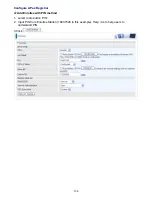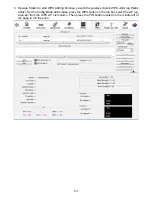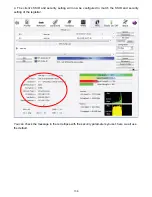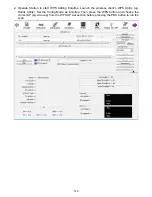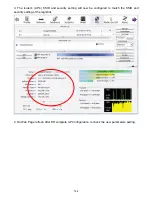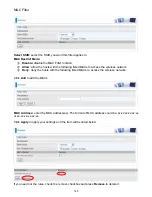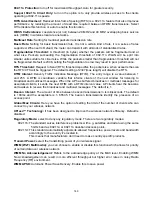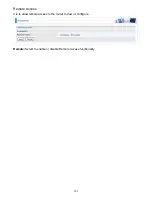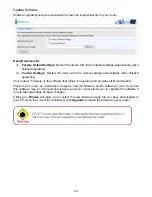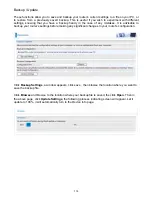
149
802.11n Protection:
turn off for maximized throughput. Auto for greater security.
Support 802.11n Client Only:
turn on the option is to only provide wireless access to the clients
operating at 802.11n speeds.
RIFS Advertisement:
Reduced Inter-frame Spacing (RIFS) is a 802.11n feature that also improves
performance by reducing the amount of dead time required between OFDM transmissions. Select
Off to disable this function or auto to enable this function.
OBSS Co-Existance:
coexistence (or not) between 20 MHZ and 40 MHZ overlapping basic service
sets (OBSS) in wireless local area networks.
Multicast Rate:
Setting for multicast packets transmission rate.
Basic Rate:
Setting for basic transmission rate. It is not a certain kind of rate, it is a series of rates
supported. When set to Default, the router can transmit with all kinds of standardized rates.
Fragmentation Threshold:
A threshold (in bytes) whether the packets will be fragmented and at
what size. Packets succeeding the fragmentation threshold of 802.11n WLAN will be split into
smaller units suitable for circuit size. While the packets smaller than fragmentation threshold will not
be fragmented. Default is 2346, setting the fragmentation too low may result in poor performance.
RTS Threshold:
Request to Send (RTS) threshold specifies the packet size, when exceeds the size,
the RTS/CTS will be triggered. The default setting of 2347(max length) will disable the RTS.
DTIM Interval:
Delivery Traffic Indication Message (DTIM). The entry range is a value between 1
and 255. A DTIM is countdown variable that informs clients of the next window for listening to
broadcast and multicast messages. When the AP has buffered broadcast or multicast messages for
associated clients, it sends the next DTIM with a DTIM interval value. AP clients hear the beacons
and awaken to receive the broadcast and multicast messages. The default is 1.
Beacon Interval:
The amount of time between beacon transmissions in is milliseconds. The default
is 100ms and the acceptable is 1- 65535. The beacon transmissions identify the presence of an
access point.
Global Max Clients:
Here you have the option of setting the limit of the number of clients who can
connect to your wireless network.
XPress™ Technology:
It has been designed to improve the wireless network efficiency. Default is
disabled.
Regulatory Mode:
select to deny any regulatory mode. There are two regulatory modes:
802.11h: The standard solves interference problems with e.g. satellites and radar using the same
5 GHz band as 802.11a or 802.11n dual-band access points.
802.11d: This standard automatically adjusts its allowed frequencies, power levels and bandwidth
accordingly to the country it's located in.
This means that manufacturers don't need to make country specific products.
Transmit Power:
select the transmitting power of your wireless signal.
WMM (Wi-Fi Multimedia):
you can choose to enable or disable this function which allows for priority
of certain data over wireless network.
WMM No Acknowledgement:
Refers to the acknowledge policy at the MAC level. Enabling WMM
No Acknowledgement can result in more efficient throughput but higher error rates in noisy Radio
Frequency (RF) environment.
WMM APSD:
Automatic Power Save Delivery. Enable this to save power.
Summary of Contents for BiPAC 7800NL
Page 12: ...9 Important note for using this router ...
Page 17: ...14 Connecting Your Router Users can connect the ADSL2 router as the following ...
Page 57: ...54 The device summary information ...
Page 64: ...61 Click Next to check the settings If you confirm click Apply to submit the settings ...
Page 67: ...64 Click Next to go on to check the settings Click Apply to apply your settings ...
Page 69: ...66 IPv6 disabled Click Apply to apply your settings ...


